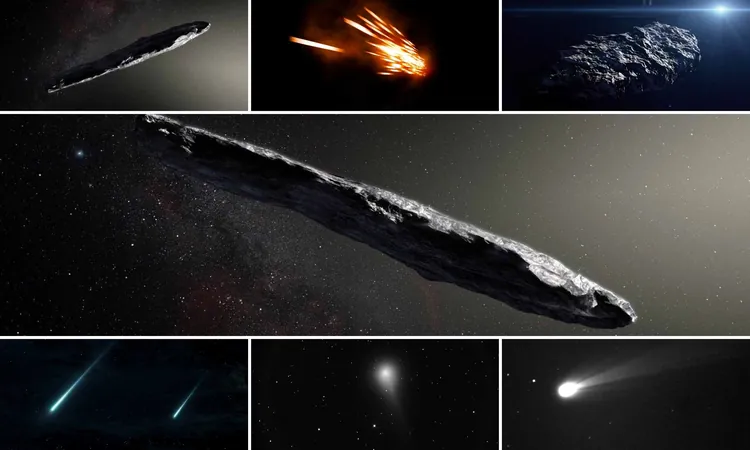
Scientists Discover Seven New Dark Comets - What Secrets Do They Hold?
2025-01-21
Author: Jessica Wong
A recent breakthrough in astronomical research has unveiled seven new dark comets in our solar system, exciting scientists and stargazers alike. This development doubles the total number of known dark comets from seven to an astonishing fourteen, raising questions about what lies beneath their enigmatic surfaces.
What Are Dark Comets?
Dark comets are celestial objects that exhibit behaviors similar to asteroids but move in ways typical of comets. Unlike standard asteroids, which usually display minor changes in trajectory due to the influence of sunlight, dark comets have shown unexpected accelerations, prompting researchers to reconsider their classification.
The phenomenon was first brought to widespread attention in 2017 with the discovery of the interstellar object 1I/2017 U1, or 'Oumuamua.' This object, although resembling an asteroid, demonstrated movement patterns suggesting it was being pushed by gaseous outflows, leading scientists to theorize they were witnessing a new type of comet.
Characteristics and Classification
Following this discovery, a small group of objects was identified with characteristics that seemed to merge the lines between asteroids and comets. Davide Farnocchia from NASA’s Jet Propulsion Laboratory noted that peculiar orbital changes in these objects typically indicated comet-like behavior.
Despite this cometary behavior, dark comets lack the visible tails and outgassing that are signature attributes of classic comets. According to Darryl Seligman from Michigan State University, an analysis of their reflective properties revealed two distinct types of dark comets—one group inhabiting the outer solar system with elongated orbits similar to Jupiter-family comets, and another group residing in the inner solar system, characterized by almost circular paths.
The Mystery Within
The presence of ice within these dark entities remains a focal point of research. Although there are indications that these comets might contain hidden ices, telescopic observations have not yet detected the outgassing commonly associated with traditional comets. This leaves scientists pondering whether these strange visitors may carry volatile materials or if another force is at play in their motion.
The origins of these dark comets also present a conundrum; some theorists suggest they formed from the same material as ordinary comets but may have lost their characteristic volatile components. Alternatively, transformative collisions may have obscured their comet-like features.
A Window to Life's Ingredients?
Emerging theories propose that dark comets could be linked to the essential ingredients for life on Earth, as posited by Seligman. The possibility that these objects delivered water or organic molecules during the early formation of our planet could alter our understanding of life's beginnings.
Future Exploration
The scientific community is committed to unraveling the mysteries surrounding dark comets. Planned advancements in imaging technology and upcoming missions could offer deeper insights into these celestial beings. Some analysts even suggest launching spacecraft to collect material from these comets for direct analysis, while others will observe their reflective properties to search for signs of ice.
The Road Ahead: New Discoveries Await
The recent findings of seven additional dark comets serve as a reminder of the vast unknowns that linger beyond our terrestrial limits. As astronomers fine-tune their search strategies, future discoveries may continue to unveil new aspects of this quiet yet captivating cosmic family. Stay tuned, as the realms of our solar system still hold many secrets waiting to be uncovered!




 Brasil (PT)
Brasil (PT)
 Canada (EN)
Canada (EN)
 Chile (ES)
Chile (ES)
 Česko (CS)
Česko (CS)
 대한민국 (KO)
대한민국 (KO)
 España (ES)
España (ES)
 France (FR)
France (FR)
 Hong Kong (EN)
Hong Kong (EN)
 Italia (IT)
Italia (IT)
 日本 (JA)
日本 (JA)
 Magyarország (HU)
Magyarország (HU)
 Norge (NO)
Norge (NO)
 Polska (PL)
Polska (PL)
 Schweiz (DE)
Schweiz (DE)
 Singapore (EN)
Singapore (EN)
 Sverige (SV)
Sverige (SV)
 Suomi (FI)
Suomi (FI)
 Türkiye (TR)
Türkiye (TR)
 الإمارات العربية المتحدة (AR)
الإمارات العربية المتحدة (AR)